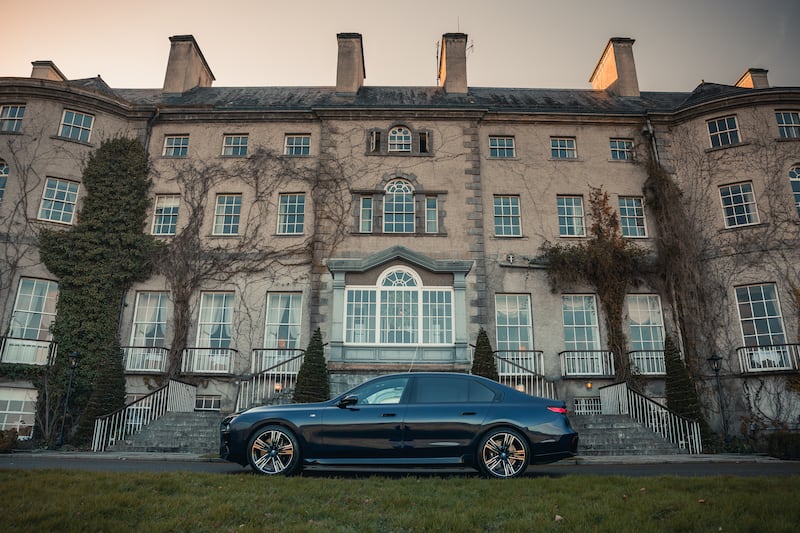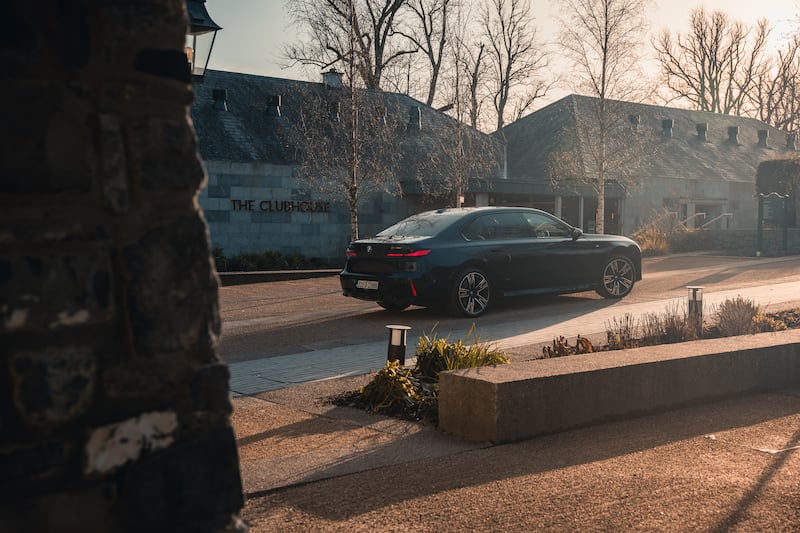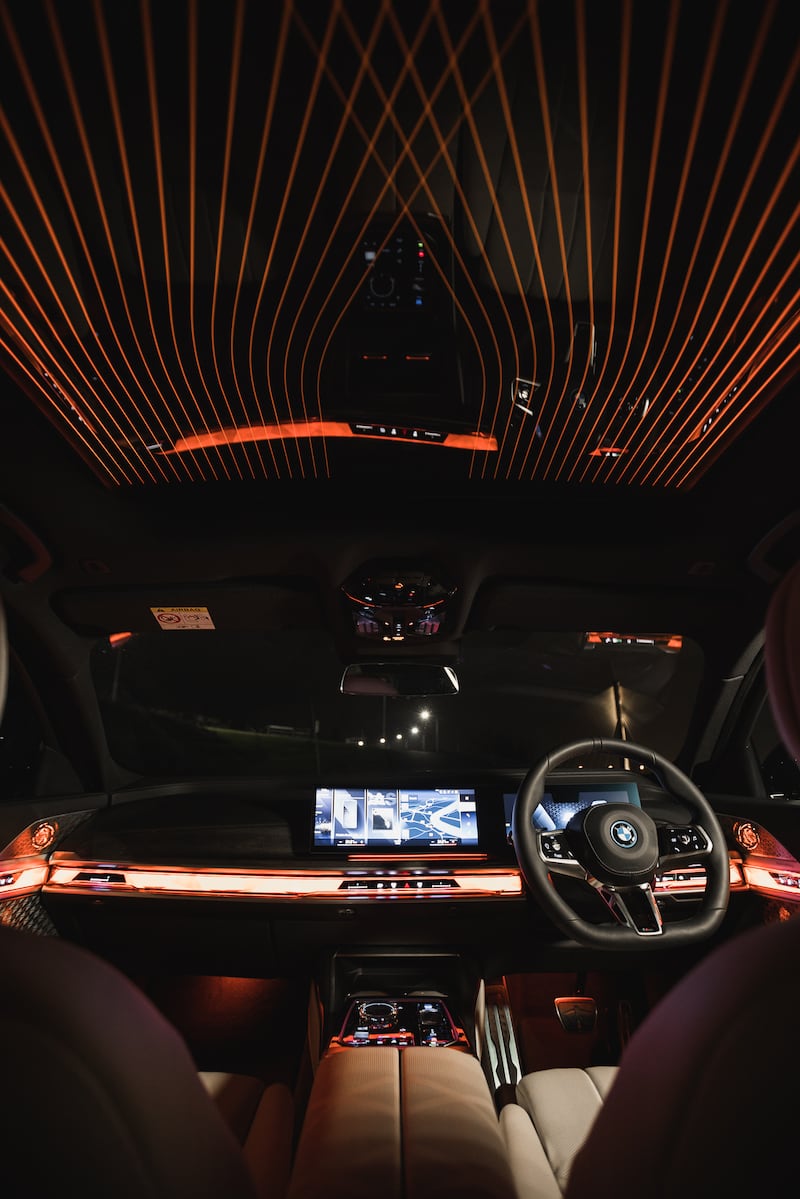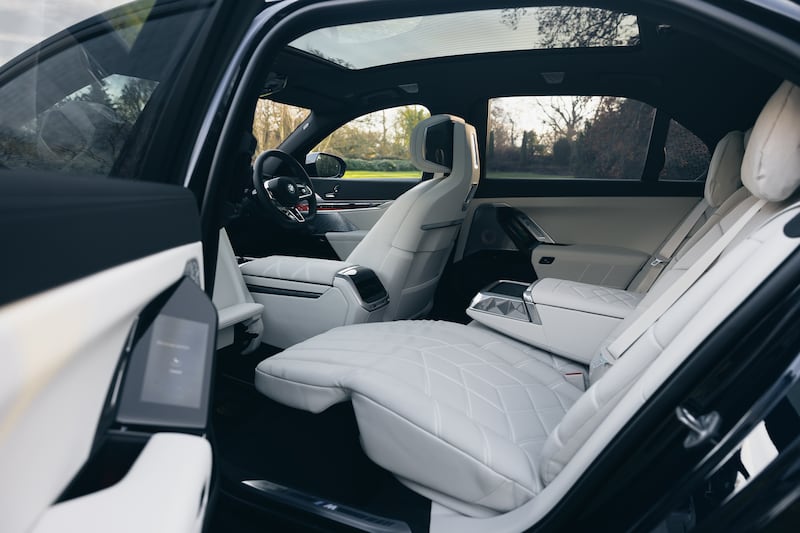I’m going to perform a magic trick right now. I have no cards to deal, no rabbit in my hat and there are no bunches of flowers up my sleeve. In fact, I’m currently wearing a T-shirt, so I don’t have sleeves. What I do have is the list price of the fully electric BMW i7 which I am currently driving, and I’m going to make its €138,303 list price sound like a bargain by simply saying three magic words.
Rolls-Royce Ghost.
Now, let’s be clear – the new 7 Series, or in its electric form the i7, doesn’t really share a structure with Rolls-Royce’s most compact model. Rolls would probably bristle at any such suggestion and point out, correctly, that its ‘architecture of luxury’ platform is unique to the brand. However, the two cars share at least a few under-the-skin components and both cars essentially do the same job, which is whisking you and three companions from point to point in maximal comfort with minimal effort.
To buy the Rolls-Royce in Ireland costs at least four times as much as this i7 ... abracadabra indeed.
READ MORE

Perhaps it ought to. After all, Rolls-Royce is one of the most storied names in the history of car manufacturing, and is a literal byword(s) for quality and perfectionism. But, having driven both, I can tell you that if the i7 gives anything away to the Rolls in terms of passenger comfort or refinement then it is only the most marginal of margins. This is an exceptionally refined, comfortable and silent car in which to drive.
In that sense it reflects all that is best about electric vehicles. Previous iterations of the 7 Series, in trying to achieve this level of cosseting, would have required a massive V12 petrol engine, capable of at best 20mpg in real-world conditions, to propel them. Indeed, the Rolls Ghost still does (and, to be clear, what a deeply wonderful engine it is). The i7 feels more of the moment, though. The 540hp developed by this xDrive60 model that we’re testing is shared between a pair of electric motors, meaning that your sybaritic swishing about is done on zero local emissions.
It must be said, though, that it’s hardly the most efficient of vehicles. BMW claims impressive electric performance for the i7 – electric consumption of 19kWh/100km, and a potential range of 625km from its 101.7kWh battery pack.
However, in the real world, it’s hard to match those figures. We averaged 24kWh/100km and saw a maximum range closer to 500km, and too often less than that. It’s something we’ve seen from other, otherwise impressive, BMW electric models recently, including the i4 and it’s likely down to the compromises brought about by the fact that the i7 shares a platform and bodywork with conventional petrol and plug-in hybrid powered models.

The rival Mercedes EQS boasts a range in excess of 700km and based on our experience with the car, 600km is a bare minimum of what can be achieved. Look at the two cars side by side, and it’s not hard to see where the Merc squeezes out its advantage (aside from its fractionally larger battery). The EQS is low, smooth and sleek, looking as if it has just emerged fresh from a session at the local wind tunnel. The BMW is tall, blocky and bulky.
Is it ugly, though? Some will so say, doubtless, and it’s certainly not subtle but the styling has most definitely grown on me during my time with the car. The front end looks rather too aggressive when seen head on, but look at it in profile and there’s more of a sleek, shark’s-nose aspect to it. Equally, the detailing around the rear looks smoother and nicer the more you see it. It will never not look like a jarring sight parked next to ‘normal’ cars though – the sheer size sees to that.
If you’re inside, you won’t care. The big curved screen is lifted from the iX SUV and looks mostly brilliant, bar one or two slightly 1990s-looking graphics. The on-screen menus are easy to work your way through too, especially as you still get the physical rotary controller of the iDrive system. There are some deeply tacky items, such as the crystalline finishes for the electric seat controls and the ‘mood lighting’ strip that runs across the dashboard.
This changes colour depending on the driving mode, or flashes bright red when you activate the hazard lights. I’m still not sure if I quite like it or not, but to be honest once you’ve experienced the exceptional comfort of the front seats, you’ll probably not care much. Like some of the best hotels, the i7′s cabin overdoes the chintz slightly, but it’s worth it for the comfort.

That’s true in the back, too. With a wheelbase that’s actually slightly longer than that of the old long-wheelbase 7 Series, there’s ample stretching room, sunblinds on the side windows and a proper blackout blind on the rear glass. Overhead, there’s a standard panoramic glass roof, which optionally can be fitted with little filigree LED lines of light. If no one is sitting in the front passenger seat, then the person in the left rear seat can stretch right out in sumptuous club-class style, all of which is controlled by neat little smartphone-style screens in the rear door handles. Compared with the similarly-priced EQS, which can feel a touch austere, the i7 looks and feels much more overtly luxurious.
Where the i7 also claws back more ground on its Mercedes rival is in how it drives. The EQS can outrange the BMW, but it can’t outcorner it. Even though the comfort of the i7 is almost total, as soon as you come to some corners it reminds you that it’s a proper BMW.

All-up, the i7 weighs a preposterous 2.7 tonnes (and a discussion about just how heavy we should allow electric cars to become is well overdue) but it belies the scales in the corners, sweeping through not with the distant hauteur of the EQS but with the driver involvement of a true-blue Munich product. As long as you’ve remembered to activate Sport mode, of course.
It’s far from a perfect car, the i7. That range is definitely an issue, although thankfully it charges with impressive speed from high-output chargers. The styling will at the very least cause debate among many, and potentially disgust in some. There’s no debate over how it drives nor how deeply wonderful the interior is, though. Yes, it’s a heavy, expensive, rich-person’s gad-about – but it’s a damned fine one.
Lowdown: BMW i7 xDrive 60 M-Sport
Power: 400kW electric system developing 544hp and 745Nm of torque, powering all four wheels via a single-speed automatic transmission.
CO2 emissions (annual motor tax) 0g/km (€120).
Electric consumption: 19kWh/100km (WLTP).
Range: 590-625km (WLTP)
0-100km/h: 6.1 sec.
Price: €138,303 as tested, 7 Series starts from €125,325.














